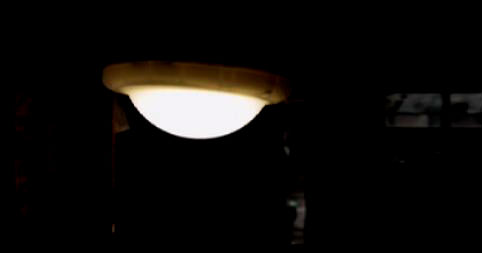PHOTO ESSAY: Charcoal-makers survive, thrive in Tondo
If you look at a satellite image of Manila, you would notice a black smoky square marking a part of the city. This is Sitio Damayan, the vast charcoal-making complex in Tondo where toxic fumes from burning chemically-coated wood permeate the air.
Residents of Sitio Damayan in Tondo make a living out of producing charcoal. They and their children are exposed to grime and toxic smoke daily. The area is also near Smokey Mountain, a dump site named such because of the methane gas produced by burnt garbage. The proximity of Sitio Damayan to Smokey Mountain, along with the black fumes surrounding the area, made the area known to its residents as Smokey 2.
Howie Severino and his “I-Witness” team immersed themselves in Sitio Damayan and discovered the dire living conditions of its residents.

(Photo from Howie Severino's Instagram account)
There are only two available livelihoods in Sitio Damayan. It’s either you work in the charcoal factory or you pick up and rummage through trash.
Charcoal-making is easier for most residents. The entire production process takes up about a week, and residents can easily sell a small bag of charcoal for P5.


(Photo from Howie Severino's Instagram account)
Instead of spending their days inside the classroom, the children of Sitio Damayan partake in charcoal production. Howie Severino caught some of them taking a break and enjoying this makeshift seesaw.
Mayang, 9 years old, explained why she prefers working in a charcoal factory instead of going to school. “Wala kasi kaming pambayad ng solar (lights),” she said.
Sitio Damayan does not have access to electricity, so residents rely on solar lamps provided by a non-government organization called Life Project 4 Youth. Charging the solar lamps in a charging station within the compound built by Life Project 4 Youth would cost P8 per charge. If Mayang doesn’t work, she and her family would have to spend the nights in suffocating darknesss.
Most of the residents in Sitio Damayan came from the provinces. John Paul, who now works in a coal-making factory, is originally from Bulacan but had to move to Manila when a typhoon destroyed their house.
He spent most his childhood living in the middle of the grime of Sitio Damayan. When asked if he still remembers what his home in Bulacan looked like, he couldn’t recall anything.
“Wala pa kasi akong isip noong dinala ako rito,” he said.
John Paul works with his grandfather Toni Simbajon, who used to be a farmer in Cebu. Mang Toni moved to Manila in 2002 to try his luck in the big city.
“Maganda ang kita. ‘Yun nga lang medyo marumi pero madali ang kita [sa pag-uuling],” he said to Howie Severino, all the while with a noticeable cough. “Medyo hinihika ako pero may pagkain naman.”
All the members of Mang Toni’s family works for his charcoal factory, including John Paul. “Pero gusto ko sa mga apo ko na maghanap-buhay sila nang maganda,” Mang Toni said.
— Bernice Sibucao/CM, GMA News








